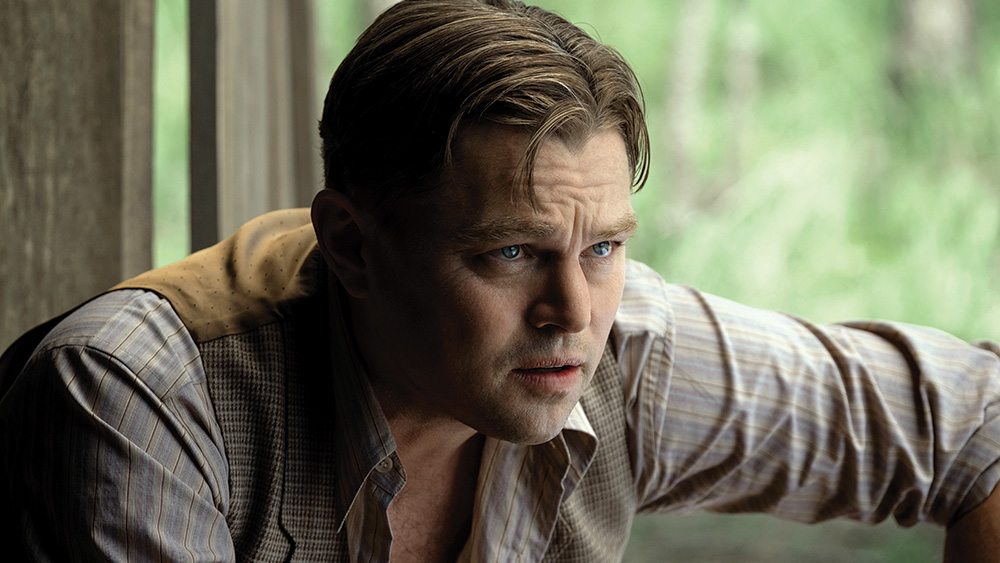It Takes a Village
by Thomas Nellen | Department Head Make-up
Many of the movies that I have worked on are based on true events. Killers of the Flower Moon is the story about the Osage Nation, whose people, mostly women, were murdered due to the greed of white men in the 1920s. Sadly enough, this is also a true story. We filmed on location in Oklahoma, where to this day, many people have not heard of this tragedy. (Only about a 100 miles away occurred the Tulsa race massacre, which happened around the same time.)
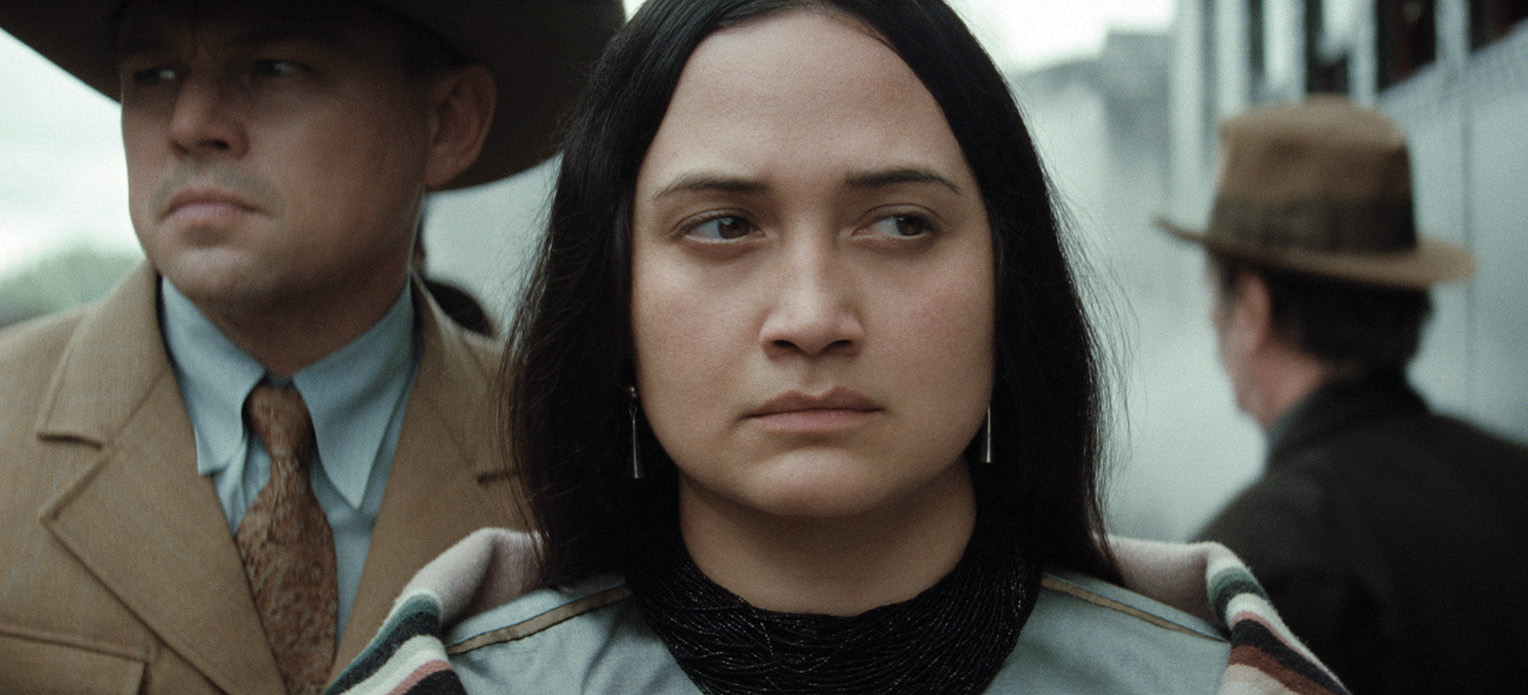
For our Indigenous actors and background artists, this project was understandably very personal. Many of our participants had relatives who were murdered, shot, poisoned, or who simply vanished one day, never to be found again.
We heard so many of these personal stories on a daily basis while getting our cast and performers ready. There were a lot of emotions and tears. To all the people who came forward in order to bring to light a brutal yet buried part of history, none of whose perpetrators were ever fully held accountable: thank you.
I was spending time in Switzerland, nine hours ahead of Los Angeles, when I received a phone call at three o’clock in the morning from Daniel Lupi, our producer. As I was sound asleep, it took me a couple of minutes to realize the importance of that call. To his question of whether I was interested and available, my answer was: “Even if I wasn’t available, I would make myself available.” I never regretted it, as it was such a life-changing experience. Shortly after our initial conversation, I found myself back in Los Angeles wrapping my head around the script, starting video calls with our director Martin Scorsese, our Department Head Hair Kay Georgiou, and our costume designer Jacqueline West, as well as of course, reaching out to my peers and putting my team together. This was an easy task, as I have met and worked with all these incredible and talented make-up artists throughout the years. My crew in the trailer consisted of key make-up Beate Petruccelli, second Ned Neidhardt, third Tracey Anderson, personal make-up to Mr. Robert De Niro (Carla White), personal make-up to Mr. Leonardo DiCaprio (Siân Grigg), FX make-up supervisor Jason Hamer, FX make-up Hiro Yada, key crowd make-up Lydia Milars, crowd make-up Nacoma Whobrey, and about 20 additional background artists.
 Our background actors were mostly made up in big tents in Pawhuska, Oklahoma. I was lucky to have Lydia aboard because she is an expert when it comes to managing big background numbers. Her work is very efficient, beautifully detailed, and she’s a great organizer. The tent had to be designed specially to accommodate both hair and make-up for hundreds of background actors daily, while at the same time, complying with our strict COVID guidelines. Lydia argued for wood board flooring and heaters/air conditioners, which was a great move. Otherwise, due to the constant change of weather, our up to 20 additional artists would have been walking around in clay and mud most of the time, sweating or freezing in the fickle prairie climate.
Our background actors were mostly made up in big tents in Pawhuska, Oklahoma. I was lucky to have Lydia aboard because she is an expert when it comes to managing big background numbers. Her work is very efficient, beautifully detailed, and she’s a great organizer. The tent had to be designed specially to accommodate both hair and make-up for hundreds of background actors daily, while at the same time, complying with our strict COVID guidelines. Lydia argued for wood board flooring and heaters/air conditioners, which was a great move. Otherwise, due to the constant change of weather, our up to 20 additional artists would have been walking around in clay and mud most of the time, sweating or freezing in the fickle prairie climate.
Before heading out to Oklahoma, I learned that we would all get our COVID vaccines at the Osage Nation upon our arrival. What a relief, as we shot this movie during the peak of the COVID pandemic. Continuous testing and self-checks in the morning were a must. Also, face masks, goggles, and face shields were required to be worn by crew members interacting with the actors at all times.
Marianne Bower ran our incredible research department. Even though we had done our own extensive research at the beginning of the project, there were always certain figures that were hard for us to find online. In those particular cases, Marianne was our answer.
Kay Georgiou and I, meanwhile, have a longstanding working relationship dating back to the late 1990s. I believe that we have a very similar work ethic and style, which of course, made our collaboration so much easier. Her team consisted of key hair stylist Jameson Eaton, crowd key hair stylist Gail Hensley, hair stylists Jimmy Goode, Melissa Yonkey, Deborah Ball, Mary Everette & Zoey Bolton, hair stylist to Leonardo DiCaprio (Kathy Blondell), hair stylist to Robert De Niro (Jon Carter), and Jerry Popolis. Plus our great make-up and hair production assistant Casey Pratt.
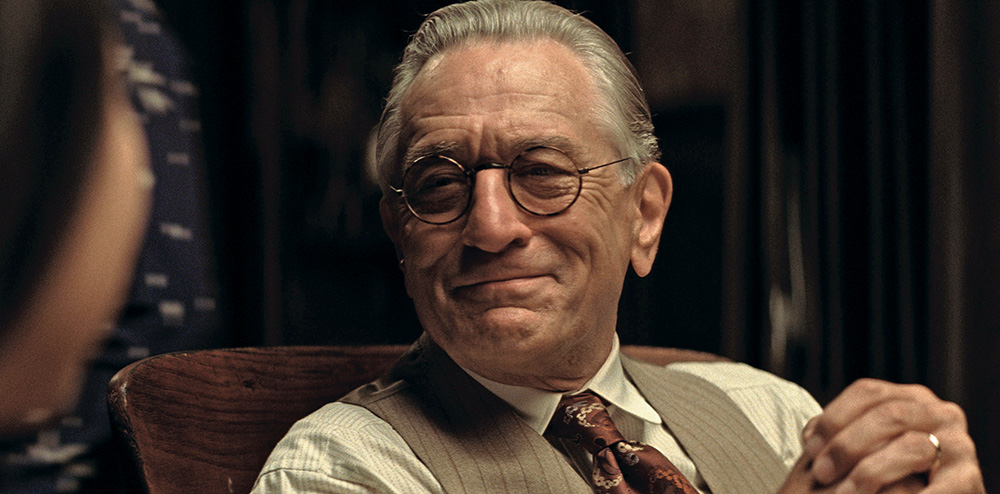
As most of our characters were based on actual people, the actors’ and actresses’ hair was cut and styled to each character’s likeness, involving wigs, extensions, pieces and coloring. Make-up consisted of shading, toning, and at times, adding mustaches and beards.
The Osage became the richest people in the world per capita once they obtained the mineral rights for their given land and found oil beneath it. Naturally, their styles followed suit. On one hand, they were influenced by French or European fashion and lifestyle, and on the other hand, they stayed close to their own traditions and rituals. It was quite common to see ladies with a high-fashion bob and fancy make-up, dressed in expensive French clothing and finally wrapped in a tribal blanket. Needless to say, the amount of wigs Kay had to prepare was immense: just short of 300 between the actors and background! Her team scoured every possible store in Tulsa, as well as online, to find cost-efficient pieces and wefts for extensions (which were mostly used on the crowd). That was the only way to keep the hair budget from going through the roof.
The hair department’s main challenge, however, was the fact that a lot of the Osage men in our cast had modern/short haircuts, whereas their characters did not. The hair department used wigs to create longer braided period hair styles. Some wigs and toupees were used on Caucasian men to create the “short sides and back” period look, as a lot of them came to set with hair far too short on the top.
For the Osage women, a lot of extensions were used to achieve waist-length hair. Bob wigs were used for the trendy and fashionable Osage woman, such as Anna Brown (Cara Jade Myers). For Caucasian women with modern highlights or modern straight hair, short bob wigs were also used.
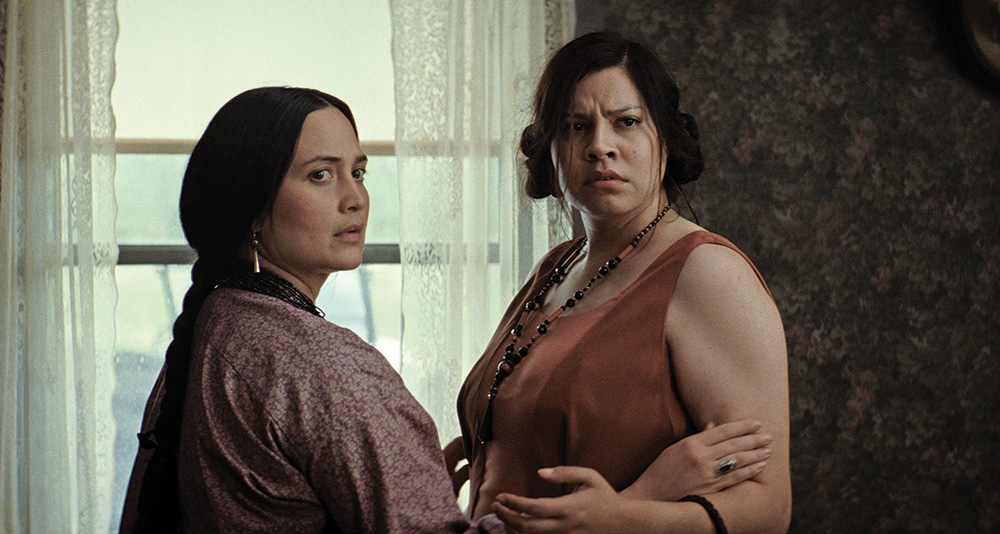
The make-up department faced plenty of challenges of our own. One was the side effects of wearing masks to avoid COVID infection. The weather was so muggy during the summer months, and the traditional blankets and woolen suits the men wore didn’t help. People were wet from sweating, and their masks more often than not soaked. I cannot even tell you how many boxes of Kleenex we went through blotting everyone down in between takes. Because of the moisture, the glues for the mustaches and beards didn’t stick, so we had to create pieces with Super Baldiez backings in order to keep them in place and ensure the hand-laid mustaches wouldn’t fall apart. Even though we gave everyone sunscreen constantly, tan marks from the masks started to show. Of course, we had to cover them.
…and then there were the tattoos. Tattoo sleeves were just not the trend at the time. Though we had actors show up with modern tattoos covering their hands, necks and even creeping up to their faces, it wouldn’t do for the 1920s. Our fantastic background make-up team took care of concealing all of that.
In order to create the appropriate make-up for our characters, we split them into categories. There were the traditional Osage, then the trendy, high-fashion ones. Then we had the regular town folks, the rich ones, and the hoodlums. We worked with color palettes that defined the lip colors, rouge and eyeshadows, according to the period.
Mollie Burkhart (Lily Gladstone) was the more traditional type, with a nice natural glow. In the story, she goes from fresh and healthy-looking to sick and debilitated, close to death. It was essential that no foundation, unless the character called for it, was ever visible. As we all know, though: A no make-up look does not mean no make-up. This applies for both men and women. For Mollie, I used the Visiora MV foundation plus Kosas tinted face oils. Overall, I designed four looks for Mollie: warm, glowing and healthy, then slightly paler, then pale with under eye circles and finally, pale dark circles and dark contouring to create gauntness. Dry lips toward the end of the shoot supported the look of the last stages of her health issues and her near-death look.
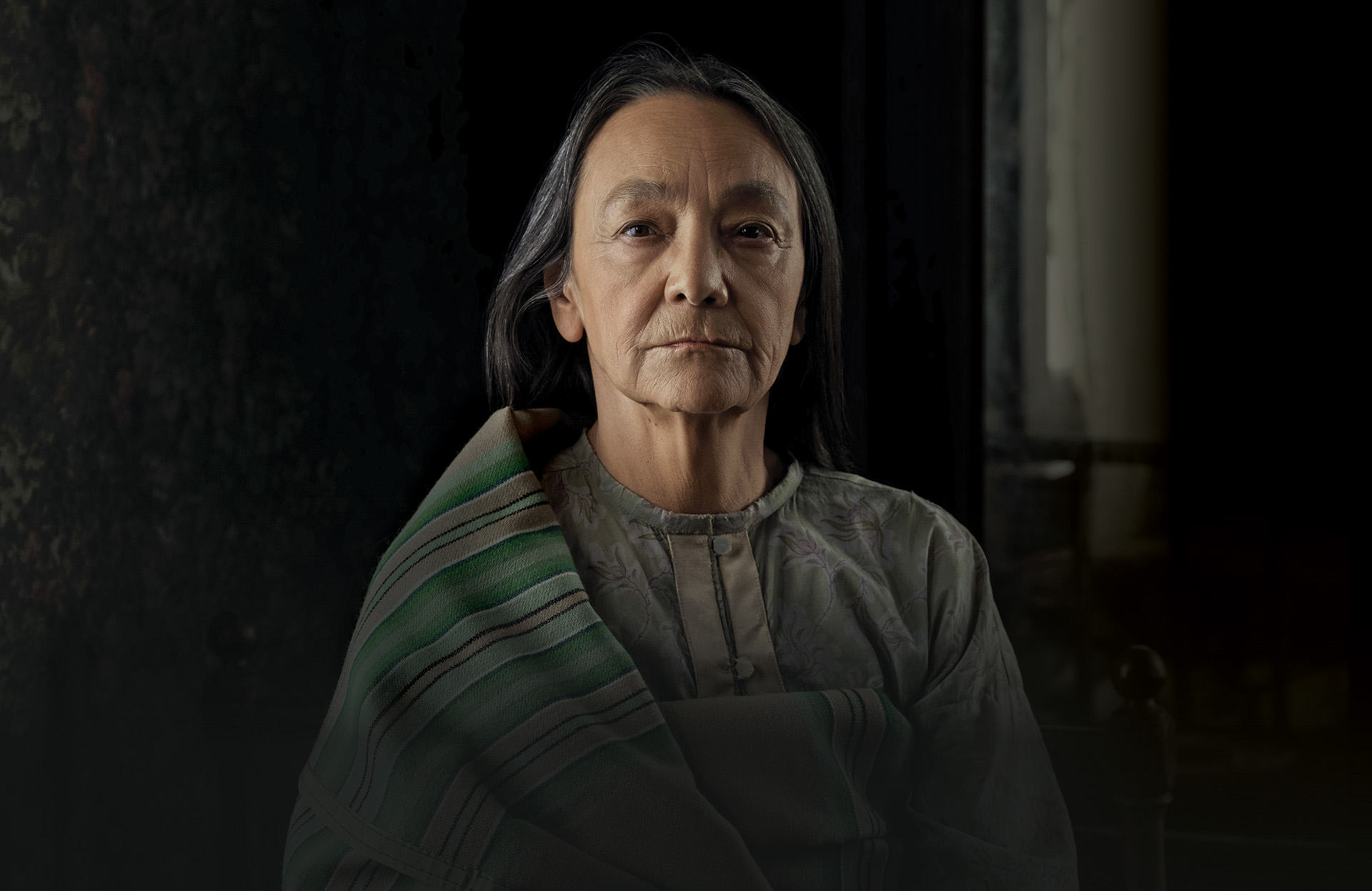 When we first met our cast, most of the Indigenous members told us that no matter what, even if they stayed out of the sun, that they would still be at least three shades darker in a few month’s time. Because of our shooting schedule and in order not to run into any continuity problems (we went from spring to full hot summer season to fall), we warmed the Osage cast up a few shades, then once they reached that exact color naturally, we were able to cut back on make-up.
When we first met our cast, most of the Indigenous members told us that no matter what, even if they stayed out of the sun, that they would still be at least three shades darker in a few month’s time. Because of our shooting schedule and in order not to run into any continuity problems (we went from spring to full hot summer season to fall), we warmed the Osage cast up a few shades, then once they reached that exact color naturally, we were able to cut back on make-up.
Carla White has a long-standing working relationship with Robert De Niro, just like Siân Grigg and Kathy Blondell have with Leonardo DiCaprio. Carla designed Bob’s make-up, while Jon Carter did his hair. William King Hale’s crisp and dapper look was subtle, yet very effective.
Leo is always keen to become a character visually first and is very involved in the process. Siân and Kathy tested many different ideas for Ernest Burkhart. In the end, they settled on bleaching his eyebrows, for starters. Add to that a prosthetic nose piece and ear augmenters made by Vincent Van Dyke, and teeth and jaw by Chris Lyons from Fang FX. For his exhausted and drunk/drudged look, Leo wore scleral lenses to make his eyes blood shot. Kathy had Leo’s hair lightened with golden highlights, then gave him a WWI military haircut, as he had just returned from the war. The parting and styling were changed to show his change in circumstance throughout the story, as Ernest grows in wealth, status, and complicity.
Jason Hamer’s dummies and body parts were so beautiful and realistic. One couldn’t even tell what was real and what wasn’t. When he and Hiro brought their dummies from Los Angeles to set, we teamed up and tweaked the “victims” in order for them to look identical. His beautiful and intricate work amazes me every time we get a chance to work together. The wound and blood pieces that I designed for our dead bodies, meanwhile, could be pre-blooded for different effects.
Wherever possible, Kay and I both had a team member assigned to an actor for comfort and continuity reasons. Every make-up artist has their own routine and products that they’re used to, and we used it all, as long as it resulted in the required look. From beauty to age to death, from healthy glows to sickened pallors … this movie covered all bases.
It does take a village. It takes so much talent and dedication from every department and everyone involved to pull off a project like this. The make-up department came mostly out of Local 706, LA; the hair department was hired out of Local 798, NY.
As there were only about half of the needed additional make-up artists available from Oklahoma, we flew the rest in from Los Angeles and New York. The additional hairs stylists came from either New York, North Carolina, Arizona, or Atlanta, Georgia.
This was a challenging project, but again, I am very proud to have been able to contribute to this incredible film and I hope that it will receive the recognition that it deserves. I feel honored and proud that Martin Scorsese trusted me to create characters that felt authentic and true to this chapter of the Osage people’s story. Thank you Mr. Scorsese, for having us. •

